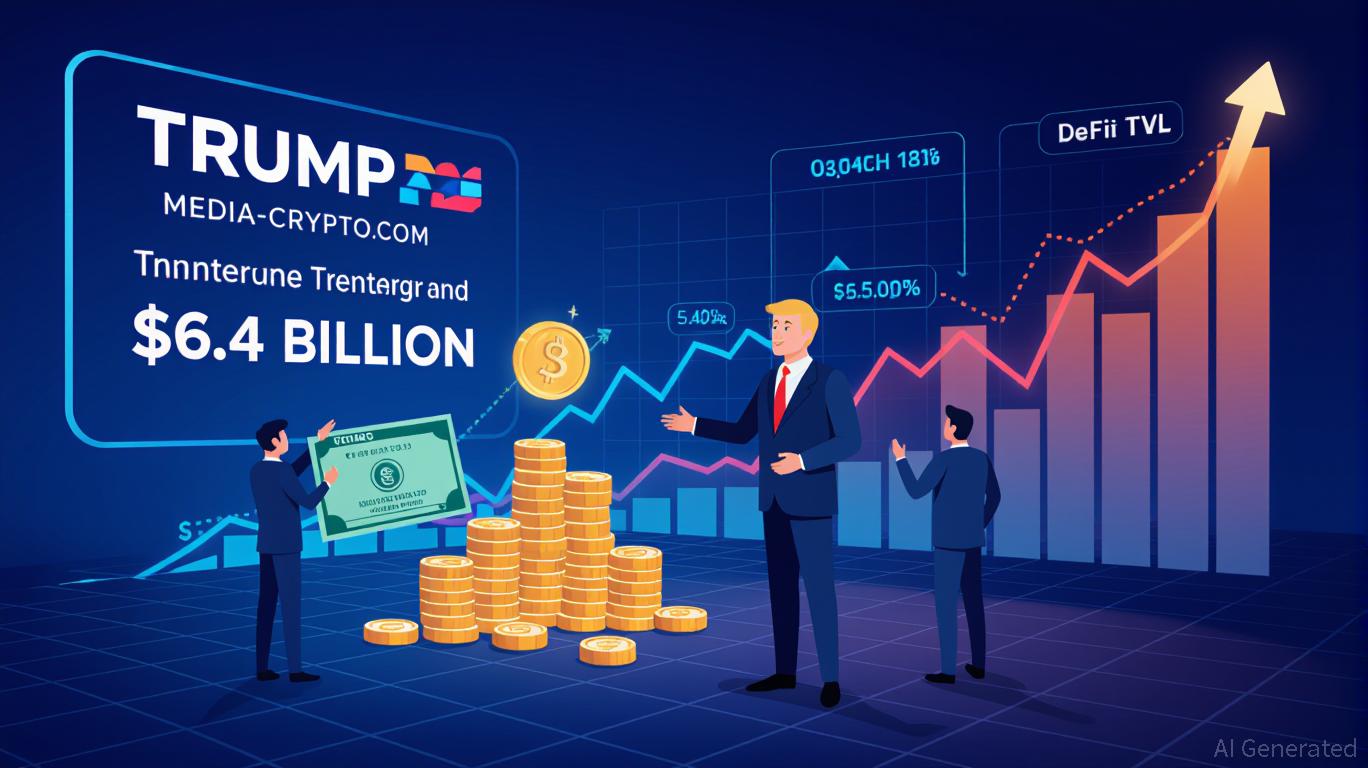KindlyMD's $5B Equity Raise: A Strategic Bet on Bitcoin's Institutional Future
- KindlyMD raised $5B via ATM offering to buy up to 1M BTC, joining corporate giants like MicroStrategy and Tesla as major Bitcoin holders. - The strategy frames Bitcoin as an inflation hedge and treasury diversifier, citing historical outperformance over gold, stocks, and bonds. - Critics highlight risks: extreme price volatility, equity dilution, and regulatory uncertainties around crypto custody and taxation. - The move reflects broader institutional adoption, with top 100 public companies holding ~1M B
KindlyMD’s recent $5 billion at-the-market (ATM) equity offering has thrust the company into the spotlight as a bold proponent of Bitcoin’s institutionalization. The raise, announced on August 26, 2025, aims to accelerate the company’s Bitcoin treasury strategy, with proceeds allocated to purchasing up to one million BTC—nearly 44,900 of which would be added to its existing 5,744 BTC holdings [1]. This move positions KindlyMD among the largest corporate Bitcoin holders, alongside firms like MicroStrategy and Tesla , and reflects a broader trend of companies reimagining their treasuries through digital assets. But is this a visionary pivot or a precarious gamble?
The Rationale: Bitcoin as a Treasury Reserve Asset
The financial logic underpinning KindlyMD’s strategy mirrors arguments made by early adopters like MicroStrategy and Marathon Digital Holdings. Bitcoin’s capped supply of 21 million units positions it as a hedge against fiat currency devaluation, particularly in an era of persistent inflation and expansive monetary policies [2]. For KindlyMD, Bitcoin is not just a speculative play but a core reserve asset designed to preserve capital and diversify risk. The company’s CEO, David Bailey, framed the ATM offering as a “pivotal step” in its long-term capital strategy, emphasizing Bitcoin’s potential to outperform traditional treasuries like cash and bonds [3].
This rationale is supported by historical performance. Bitcoin has consistently outpaced gold, equities, and Treasury bonds in returns over the past five years [2]. For instance, MicroStrategy’s Bitcoin holdings have generated a compound annual growth rate (CAGR) of ~63.6% since 2021 [6]. By allocating capital to Bitcoin, companies like KindlyMD aim to leverage its appreciation to fund further acquisitions or debt repayment, creating a self-reinforcing cycle.
The Risks: Volatility, Dilution, and Regulatory Uncertainty
Yet the risks are equally pronounced. Bitcoin’s volatility remains a double-edged sword. While its price has surged in bull markets, sharp corrections—such as the 2022 crash—could erode capital and force companies to sell at a loss. KindlyMD’s $5B raise, which dwarfs its $1.2B market cap, has already triggered investor skepticism, with its stock plummeting 23% post-announcement [4]. Critics argue that the ATM structure, while designed to mitigate dilution, could still weaken shareholder value if the company overleverages its balance sheet.
Custody and regulatory challenges further complicate the strategy. Unlike cash or gold, Bitcoin requires secure private key management to prevent theft or loss. Companies must invest in robust infrastructure, such as cold storage solutions, to safeguard holdings [1]. Meanwhile, the lack of standardized audit frameworks for digital assets introduces uncertainty, particularly as regulators like the SEC and IRS continue to refine their approaches to crypto taxation and reporting [2].
A Broader Trend: Bitcoin’s Institutional Adoption
KindlyMD’s move is part of a larger shift. As of 2025, the top 100 public companies collectively hold nearly 1 million BTC, valued at over $109 billion [5]. Firms like Tesla and Block (formerly Square) have already integrated Bitcoin into their treasuries, citing its 24/7 liquidity and low correlation with traditional assets [4]. This trend is driven by a desire to hedge against inflation and diversify reserves in an environment where cash yields are near zero.
However, the scale of KindlyMD’s raise raises questions about sustainability. Unlike MicroStrategy, which raised capital through convertible bonds, KindlyMD is relying heavily on equity issuance—a strategy that could backfire if Bitcoin’s price stagnates or declines. The company’s success will depend on its ability to balance Bitcoin’s long-term potential with short-term market realities.
Conclusion: A High-Stakes Bet with Institutional Implications
KindlyMD’s $5B equity raise represents a high-stakes bet on Bitcoin’s future as a corporate reserve asset. While the company’s strategy aligns with a compelling narrative of inflation hedging and capital appreciation, it also exposes vulnerabilities tied to market volatility, regulatory ambiguity, and execution risk. For investors, the key question is whether the potential rewards of Bitcoin’s institutional adoption outweigh the costs of dilution and uncertainty.
As the corporate world continues to experiment with digital assets, KindlyMD’s journey will serve as a case study in the risks and rewards of redefining treasury management in the age of crypto.
Source:
[1] Kindly MD's $5B Bitcoin Play Comes as DATs Raise Fears for ...
[2] What Are Corporate Bitcoin Treasuries?
[3] KindlyMD Announces $5 Billion At-The-Market Equity ...
[4] KindlyMD's $5B ATM Offering and Bitcoin Treasury Strategy
[5] KindlyMD launches bold $5B equity offering to accelerate ...
[6] BTC Treasuries Uncovered: Premiums, Leverage and ...
Disclaimer: The content of this article solely reflects the author's opinion and does not represent the platform in any capacity. This article is not intended to serve as a reference for making investment decisions.
You may also like
Wang Yongli: The Profound Impact of US Stablecoin Legislation Exceeds Expectations
Crypto assets cannot become the real currency of the crypto world.

CRO’s Sudden Surge Amid Bitcoin’s Rally: Altcoin Momentum and DeFi Recovery in a Bullish Crypto Cycle
- Cronos (CRO) surged 164% weekly amid Bitcoin's $111,000 rally, driven by Trump Media-Crypto.com's $6.4B treasury partnership. - The deal injected institutional liquidity into CRO, expanding its utility in Truth Social payments and boosting TVL by 46.16% in Q3 2025. - Cronos' POS v6 upgrades and $100M Ecosystem Fund position it as a hybrid DeFi-corporate asset, outperforming Bitcoin in percentage gains. - Bitcoin's 59.18% dominance in Q3 2025 highlights a "two-tier" market structure, with altcoins like CR

The High-Stakes Gamble of Celebrity-Backed Memecoins: Why Retail Investors Are Getting Burned
- Celebrity-backed memecoins exploit influencer hype and centralized tokenomics to manipulate prices, leaving retail investors with volatile, utility-less assets. - Insiders hoard 70-94% of supply in projects like YZY and $TRUMP, using liquidity pools and pre-launched allocations to extract millions before crashes. - U.S. regulatory ambiguity enables manipulation via wash trading and sniping, while Canadian authorities demand transparency in promotional arrangements. - Academic studies confirm 82.6% of hig

Horizon: Bridging DeFi and Financial Inclusion Through Consórcio Quotas
- Aave's Horizon project uses blockchain and Chainlink tools to democratize capital access in emerging markets via tokenized real-world assets (RWAs). - Chainlink's ACE and CCIP enable compliance automation and cross-chain interoperability, unlocking $25B in institutional liquidity through structured financing models. - The reimagined Consórcio Quotas model tokenizes cooperative loans with automated KYC/AML checks, expanding financial inclusion while meeting regulatory standards. - Strategic partnerships w
